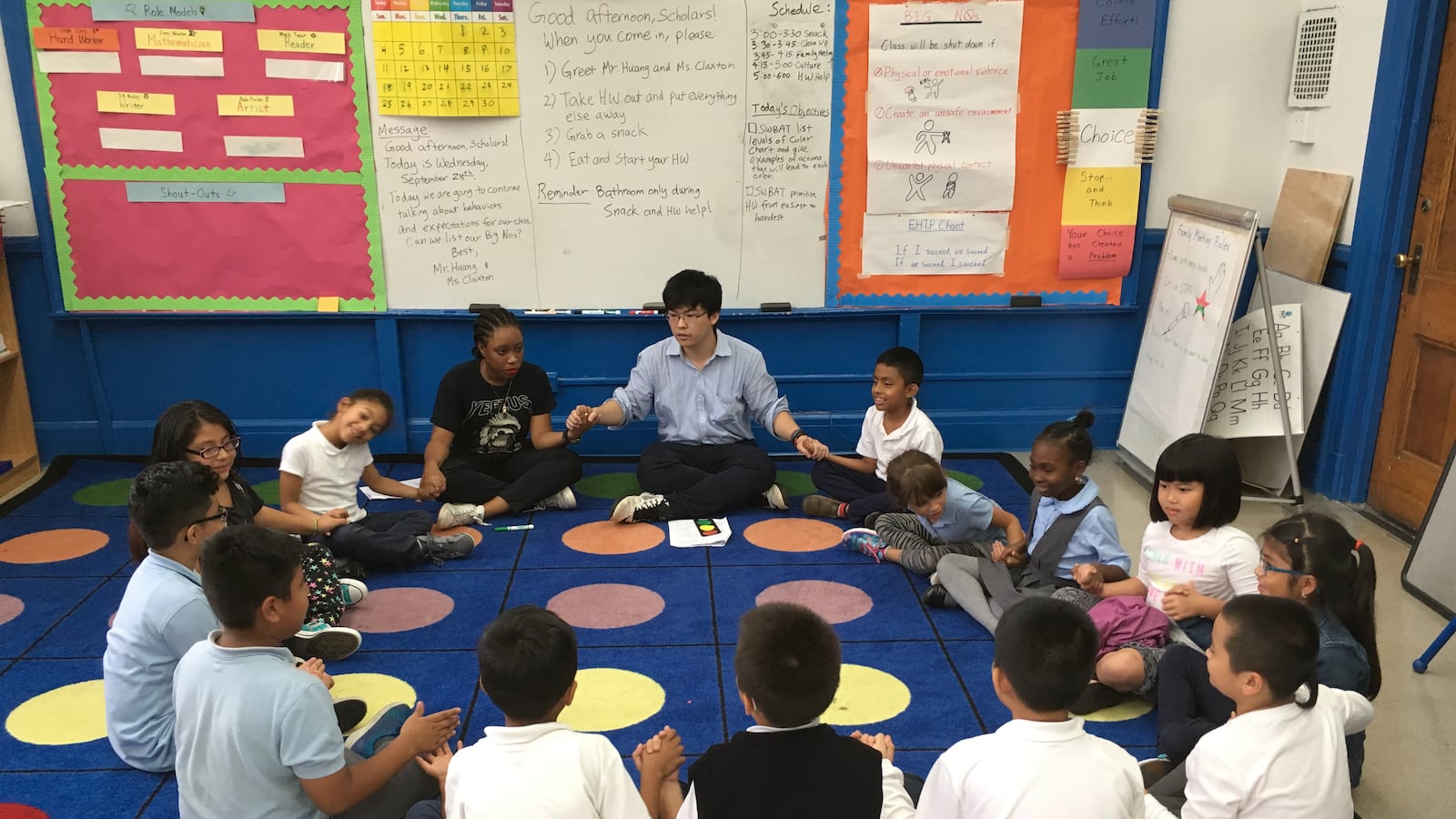When I was young, my father used to call me Mrs. Malaprop, a reference to a character in an 18th century play famous for using words incorrectly. This was a reminder of how often I spoke when I didn’t know.

I remember the interruptions to my stories. “Susan, don’t speak when you don’t know what you’re talking about.”
“But I do know,” I would insist.
“OK, then, what does it mean?” he demanded.
“I can’t explain it, but I know it,” I reassured him.
“Thank you, Mrs. Malaprop,” he would say, before ending my story midstream.
Thirty years later, as a teacher and teacher-educator, this lesson is one I still try — and often fail — to live by.
In my seven years of teaching, I prioritized understanding my students and their cultures. But it was only later, when I joined an organization deeply committed to culturally responsive pedagogy, that I truly began to unpack what that meant. I’m a white woman who grew up in a wealthy community, and I now train future teachers who will mostly serve low-income students of color. I do what I do because I never want another educator to come to recognize race and racism in the way that I did.
Even once I had become what many would consider a “good teacher,” I misunderstood what culturally responsive teaching meant. I taught lessons about the Civil Rights Movement, used familiar names in math problems, and allowed students to tell their own stories through personal narrative writing. I looked around my classroom — filled with student talk, learning centers, and differentiated instruction — and proudly thought, At least I can give these kids one good year.
But I taught about the 1960s and the power of protests without exploring issues of race and identity. I taught a unit on genetics and never looked at the myth of race being genetic. I read aloud to my students but never read a book set in the Bronx.
I remember one day when 10-year-old Josh referred to Ariana as “that white girl.” Ariana was offended; she did not think of herself as white and called herself Hispanic. There were so many directions I could have taken at that moment, but I chose the one that did nothing to further my students’ racial education. I simply said, “You’ve known her for months; it’s unacceptable not to call her by name.”
I was woefully unprepared when it came to cultural competency, but that changed when I began working with colleagues, in particular, people of color, at the East Harlem Tutorial Program and the Hunter College School of Education.
At EHTP, I learned how little I knew about racism’s effects on our country’s history and on my students’ lives. With the help of trainings, mentors, and interactions with students, families, and community members, I learned what makes a truly culturally responsive education: teaching children to celebrate their identities, recognizing how those identities affect their experiences, and navigating and transforming alienating spaces without compromising students’ well-being.
My colleagues and I wanted to create a new kind of training space, one that would put cultural responsiveness front and center. We called it the East Harlem Teaching Residency.
In our program, we teach residents the harm in correcting a student’s syntax by saying, “That’s not how we speak.” We help them consider our students’ values and experiences when they set expectations, create power structures, define right and wrong, and determine academic success. We immerse them in the East Harlem community, celebrating its history and addressing misperceptions about the neighborhood. And we recruit residents with backgrounds that resemble our students’, emphasizing the value of their presence in our classrooms.
This work is rarely easy and often emotional, and it requires constant reflection.
Inevitably, at the beginning of the year, we have at least one resident who resists racialization. A resident once identified her race as “human,” while another told us, “I don’t like the concept of race.” Therefore, we spend the first few weeks of the residency unpacking our identities and considering how people are perceived and categorized.
Sometimes, residents experience marginalization from their colleagues or students. Last year, a student of Dominican descent told a Haitian teaching resident that a wall should be built between their countries and that there was something wrong with her people. The resident had to take a breath, lean on colleagues for support, and face the student with understanding to elicit his ideas about race and racism and help him recognize the harm he had caused.
When that same resident was constantly corrected and spoken over by a colleague in the classroom, our team watched a video of the two teaching together and discussed the dynamics of power and privilege. Once the problem was identified, the participants had a restorative conversation and designed a more effective co-teaching structure that positioned the resident as a celebrated leader in the classroom, undoing the damaging message that had been sent to her students.
Often, I return to that conversation with Josh and Ariana — my fifth-grade students — with my residents. I cannot undo the damage I caused in moments like that, and so I work every day to develop teachers who will be better equipped to help students unpack race and identity. I approach this work with humility, with a commitment to learning from mentors, colleagues, residents, and students, and by honoring my father’s insistence that I constantly reexamine what I think I know.
Susan Gonzowitz is the founding managing director of the East Harlem Teaching Residency and an adjunct lecturer at the Hunter College School of Education. She was previously an instructional coach and elementary school teacher in New York City.
About our First Person series:
First Person is where Chalkbeat features personal essays by educators, students, parents, and others trying to improve public education. Read our submission guidelines here.


